When time is not on your side

— Page B6


— Page B6

— Page B1
WEDNESDAY, MAY 24, 2023
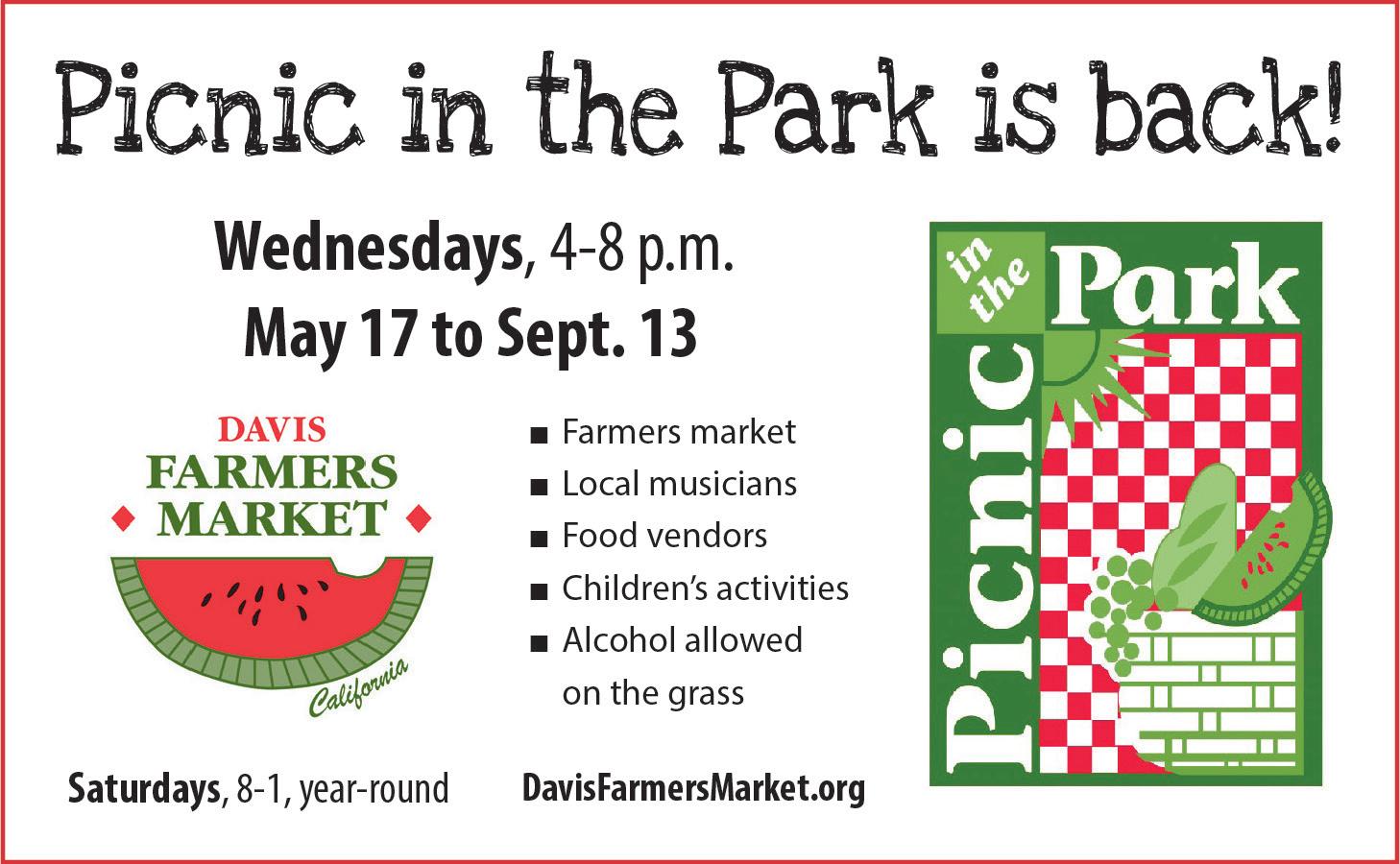


Carlos Reales
Dominguez, 21, appears at a pre-conference hearing at Yolo Superior Court on Monday, May 22, 2023, with Dan Hutchinson, deputy public defender.
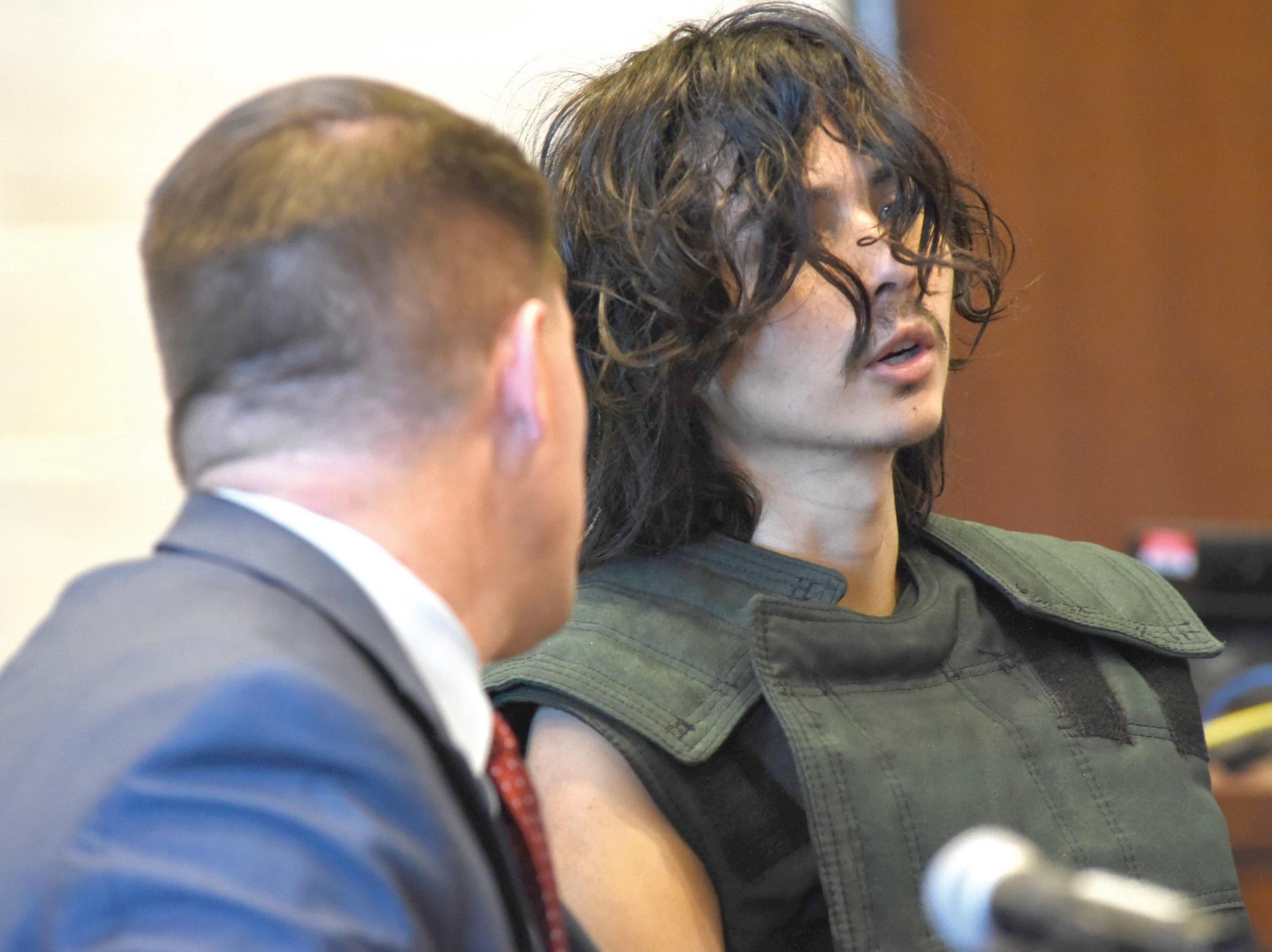
Fred Gladdis/ enterprise phoGo


WOODLAND — A judge suspended court proceedings Monday for the former UC Davis student charged with killing two people and attempting to kill a third, after a defense attorney declared doubts regarding his mental competency.
Carlos Reales Dominguez must now undergo a psychiatric assessment to determine whether he understands the nature of the court process and can assist his lawyer in preparing his defense.
The 21-year-old stands accused of fatally stabbing two Davis residents, David Breaux
and Karim Abou Najm, and attempting to kill Kimberlee Guillory, during a five-day span earlier this month.
He appeared in Yolo Superior Court Judge Samuel McAdam’s courtroom wearing shackles and a “safety smock” intended for jail inmates placed on suicide watch, his hair disheveled.
“It is my firm opinion that my client is not mentally competent,” said Dan Hutchinson, Dominguez’s courtappointed public defender. He declined to move forward with the preliminary hearing process prior to a ruling on the
When Cyn Gomez arrived on UC Berkeley’s campus as a second-year student in fall 2022, they realized they’d taken the benefits of online learning for granted. Their depression and anxiety, in addition to their learning disabilities, made the transition to in-person classes difficult. So they turned to the university’s Disabled Students’ Program, seeking accommodations that would excuse some class absences and provide them access to recorded lectures.
But it took Gomez almost three weeks to schedule and undergo an intake appointment with a disability specialist. By the time the office had approved Gomez’s accommodations, the first two months of their sophomore year had already gone by.
The experience left them discouraged and reluctant to recommend the Disabled Students’ Program to other students dealing with similar challenges.
“It’s frustrating to want to direct people that are struggling to a resource that they’re not going to be
See CASE, Page A3 See DISABILITY, Page A3
 By Monica Stark Enterprise staff writer
By Monica Stark Enterprise staff writer
“Death’s Futurity: The Visual Life of Black Power” by Sampada Aranke (UC Davis Ph.D. ’13) examines the importance of representations of death to Black freedom. Included are images of posters, photographs, articles, and films that focus on the deaths of Black Panther Party members Lil’ Bobby Hutton, Fred Hampton, and George Jackson and show the 1960s and 1970s Black Power era.
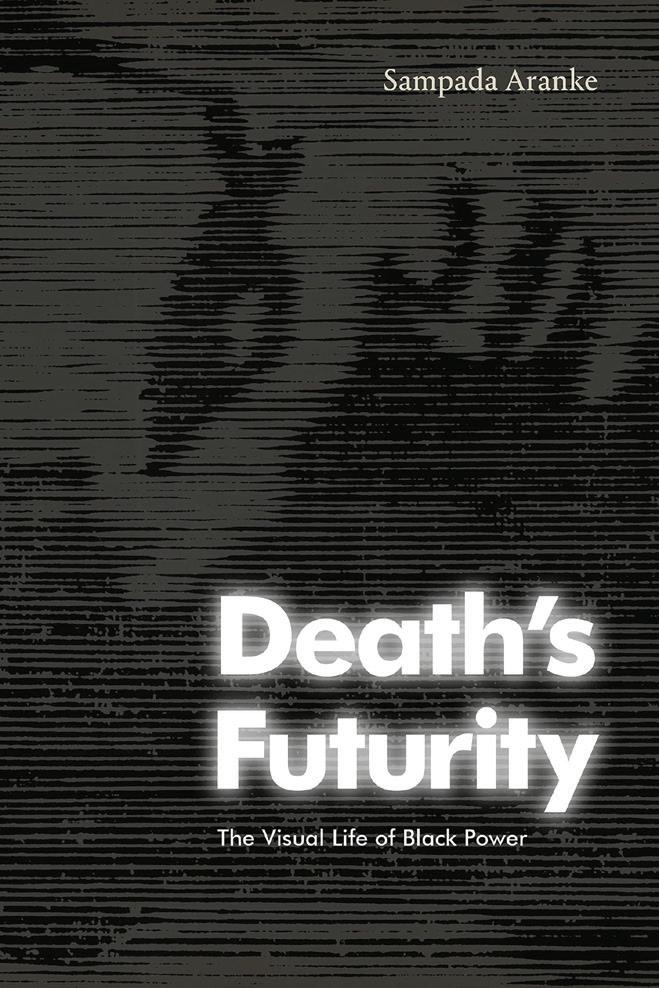
Aranke is the co-curator of the museum’s current exhibition Mike Henderson: Before the Fire, 19651985. She is an assistant professor in the Department of Art History, Theory, and Criticism at the School of the Art Institute of Chicago.

A short and very focused portrait of this violent time in history, Aranke hopes the book gives a radical archive to the artists and activists that continue to work and centralize visions of Black freedom that are essential to the book. She also hopes the book gives back some of what she was given all these years.”This book was more of a gift given to me by all the figures, historical figures, and living people that shaped it.”
Aranke came out of a political organizing tradition focusing on Black revolutionary history and politics. As an undergrad at UC Santa Cruz, she worked to build solidarity between students and the service union.
During a return visit to Davis, Aranke recently came to the Jan Shrem and Maria Manetti Shrem
Museum of Art, where she held a conversation about “Death’s Futurity” with Essence Harden, a curator at California African American Museum in Los Angeles. “It was a homecoming in a lot of ways; it was really exciting. It gave me the chance to present the project in one of its final iterations — at the very place where It started in some ways,” Aranke said.
Transforming the book from an academic stand point to something signifi cantly more refined and

See BOOK, Page A3

The Sierra Club Yolano Group Management Committee will meet via Zoom on Thursday, June 1, from 7 to 9 p.m.
The monthly meeting agenda will include discussions of the Davis’ Temporary Affordable Housing Ordinance; Guiding Principles for development of peripheral project; Teichert Mining’s new mine outside of Woodland; and Molok Luyuk (Condor Ridge).
The public is invited. To receive the details for joining the Zoom meeting, contact Alan Pryor via email at alanpryor21@gmail.com or text at 916-996-4811.
2023 Member California News Publishers Association

Certified Audit of Circulations
The Davis Enterprise is published Wednesdays, Fridays and Sundays by The Davis Enterprise Inc., 315 G Street, Davis, CA 95616.


Application to Mail at Periodicals Postage Prices is Pending at Davis, CA.
POSTMASTER: Send address changes to to The Davis Enterprise, P.O. Box 1470, Davis, CA 95617-1470.
Phone 530-756-0800
R. Burt McNaughton
Publisher Sebastian Oñate
Editor Shawn Collins
Production Manager
Louis Codone
Advertising Director

Bob Franks
Home Delivery Manager
SUBSCRIPTION RATES FOR CARRIER DELIVERY
(plus tax)
Home delivery $3.69 per week
Online $3.23 per week

12 weeks $44.84
24 weeks $89.30
48 weeks $159.79
Davis High School seniors, apparently, are expected to pull a prank or two before they leave the hallowed halls of education for whatever lies ahead in their young lives.
I don’t remember any pranks at the conclusion of my days as a Blue Devil, but I’m sure someone in our class must have tried something and probably failed.
I do remember one “prank,” but it happened on a Friday afternoon in the fall before a football game, not in June before graduation.
At the time, a kind woman named Mrs. Hall was the school librarian. And no, she was not married to Dewey Decimal.
A group of students had put up a large blue and white banner that stretched the length of the library and stated “Munch Marshall,” that evening’s opponent.
Another group of students, clearly well versed in the alphabet, folded up key parts of the sign to make it read “Munch Mrs. Hall.”
Whether they were seniors and considered this an official prank is unclear, but I have pictures to
prove what they did, which remains a Blue Devil legend to this day.
Now, however, senior pranks have become so commonplace and so expected that the school has sent out a formal “DSHS Guidelines for Senior Pranks” memo, which kind of defeats the purpose of a prank in the first place.
The memo makes copious use of the Oxford comma to tell students what you may do and what you can’t, with a heavy emphasis on the latter.
“We want our school to have a positive experience while celebrating senior traditions!” it begins, using one more exclamation point than necessary.
“Senior Pranks should resemble a sense of safety, respect, and
memorable joy for our community.”
The fact that “Pranks” is capitalized indicates that this is now some sort of official activity, like the Senior Ball, Grad Night or Homecoming.
“For those students who would like to participate in Senior Prank(s) at school, they are more than welcome to as long as they follow the guidelines listed below.”
But wait, isn’t a senior prank all about not following the guidelines? Isn’t that what it’s all about?
What, are they going to run around the track backward in P.E. and claim they have fulfilled their senior prank duty?
“No damage to school property or equipment is allowed.”
I think we already knew that.
“Pranks must not interfere with the normal functioning of the school or cause disruptions to classes or other school activities.”
Killjoy. Again, isn’t that the whole purpose of a prank, to sort of shake things up by doing something out of the ordinary?
“Pranks must not be harmful or
dangerous to any person or animal.”
Mary should leave her little lamb at home.
“Pranks should not involve any illegal or inappropriate activity, such as theft, vandalism or use or drugs or alcohol.”
I think we’re confusing pranks and hazing here.
“We encourage students to discuss details of the prank with a trusted adult on campus to ensure the aforementioned guidelines are met.”
Hopefully all adults on campus are trustworthy.
“Students must clean up after themselves and return the school to its original state before leaving.”
That school is over 60 years old. Do we really want it returned to its original state?
As one of the earliest graduates from the current campus, I hope the Davis High administration will consider this column my senior prank, a few years late, and finally hand me my diploma. Go Devils.
Reach Bob Dunning at bdunning@davisenterprise.net.

Enterprise staff
At the May 18 State Board of Education meeting, Esparto Unified School District was among the short list of schools awarded a Community Schools Partnership Program grant. Esparto was fully funded for three school sites, Esparto Elementary, Esparto Middle School and Esparto High School, for a total of $3.8 million dollars to be used over the next five years.
State Superintendent of Public Instruction Tony Thurmond announced that the California State Board of Education approved $750 million in community schools implementation grants. The move marks the largest single investment in community schools anywhere in the nation, according to the SBE.
The $4.1 billion California Community Schools Partnership Program (CCSPP) is the nation’s largest investment in the community schools model and is designed to transform educational outcomes for students through a
whole child and whole family approach that brings an array of services to the school site in order to strengthen students’ assets and improve conditions for teaching and learning. Community schools partner with education, county, and other nonprofit entities to provide integrated health, mental health, and social services alongside high-quality, supportive instruction with a strong focus on community, family, and student engagement.
“This is an important moment for California’s public schools,” said Thurmond. “I have been a longtime advocate for community schools because they break down the barriers that limit student and family access to needed services and resources to ensure that the school site itself becomes a community hub that elevates families’ strengths and deepens relationships between the campus and the community.”
“I am filled with joy at this opportunity for the Esparto community,”
Esparto superintendent Dr. Christia Goennier said.
“We have a wonderful history and a true sense of connectedness that will be enhanced through the community schools’ goals to meet the needs of our children, the whole child, to grow, learn, and achieve.”
CCSPP supports schools’ efforts to partner with community agencies and local government to align community resources to improve student outcomes, according to the state. The SBE aims for these partnerships provide an integrated focus on academics, health and social services, youth and community development, and community engagement.
“It is essential to be invested in the community,” said Sherrie Vann, director of community school for the district. “I have worked for Esparto USD for seven years as a site principal and now in community schools. My three sons attend school at Esparto Elementary School so I am a parent as much as I am a staff member for our district. We are working arm-in-
ON THE WEB www.davisenterprise.com Copyright 2023
Theater Company’s Summer Drama Program in Davis returns for 6 weeks of fun! Weekly sessions start June 26th and run through August 11th Families may enroll in one or more sessions, open to students entering first to eighth grades. Each week, kids play drama games, learn theater skills, and create and perform a staged reading of their own original play, based on the weekly session theme. The program
focuses on centering each student’s creative voice, self-confidence, and collaboration as an ensemble. This experience is for anyone looking to explore their creativity through theater arts.
Registration is open via the link on Sandcastle Theater Company’s website, including additional information on schedule and registration fees: www.sandcastletheaterco.org.
Early registration is encouraged. Please contact sandcastletheaterco@gmail.com with any questions or for more information.
arm with our community because we are all in for the youth and families.”
Community school strategies can be an effective approach to mitigate the academic and social impacts of emergencies that affect local communities, improve school responsiveness to student and family needs, and to organize school and community resources to address barriers to learning. Community schools often include four evidence-informed programmatic features, which are aligned and integrated into high-quality, rigorous teaching and learning practices and environments.
There are three separate funding opportunities for the CCSPP. The CCSPP Planning Grants are for local educational agencies (LEAs) with no existing community schools. The grant awards are up to $200,000 and can be used for up to two-years. There are two rounds for Planning Grants.
CCSPP Implementation Grants are for new community schools, or for the
expansion or continuation of existing community schools. The grant awards are up to $500,000 annually. There are multiple rounds for Implementation Grants.
Finally, CCSPP Extension Grants are for CCSPP Implementation grantees to extend CCSPP funding for an additional two years. The grant awards are up to $100,000 annually, beginning in the 2025-26 fiscal year. The California Department of Education will publish the CCSPP Extension Grant Request for Applications at a later date.
“Esparto Unified School District is transforming the lives of our Expanded Learning students through the Community Schools strategy,” said Laura Guevara, RISE after-school program coordinator. “The amount of new, equitable resources and experiences offered to our young people has been incredible. I am excited for what this means to the future development of our students and community as a whole.”
an attempted bank robbery Monday morning.
The tense situation began when the alleged would-be robber, 43-year-old Eduardo Plascencia, entered the Bank of the West on Main Street, handing a teller a note saying he was armed with a
gun and planned to rob the bank, according to Sgt. Victoria Danzl.
“A customer began speaking to Plasencia, calming him and encouraging him not to rob the bank,” Danzl said. “His words of wisdom worked and Plasencia changed his mind and left the bank.”
Officers responded to the scene and arrested Plascencia for attempted robbery. No one was injured.
competency issue, set for June 20.
“Can I say something?” Dominguez, who tried several times to speak out during the brief hearing, said at one point. Eventually, he told McAdam: “I don’t want an attorney. I would like to take it by myself, if possible.”
Dominguez remains on a nobail hold at the Yolo County Jail.
Both Hutchinson and prosecuting attorney Matt De Moura declined to comment about the proceeding, as did Breaux’s sister Maria Breaux, who sat in the audience with several supporters.
Prosecutors continue to weigh whether to pursue the death penalty against Dominguez, who in addition to the murder charges faces a special-circumstance allegation of multiple murders.
Dominguez’s alleged stabbing spree sent a wave of fear through Davis starting April 27, when a passerby discovered the brutally stabbed body of Breaux, an unhoused man known for preaching compassion in the community for well over a decade, on a Central Park bench.
On the night of April 29, UCD student Abou Najm was fatally stabbed while riding his bicycle through Sycamore Park, on his way home from an awards ceremony.
That attack prompted the Davis community to cancel public events and businesses to shut their doors early at night while law-enforcement officers from throughout the region converged on the city to search for a suspect.
A third assault on May 1 that badly injured Guillory, an unhoused woman, inside her tent at Second and L streets, brought

From Page A1
able to access for a long time,” Gomez said. “It’s like giving false hope.”
Disabled students across the University of California are facing long wait times and staffing shortages as they seek accommodations from their universities’ disability services. A UC workgroup is considering pursuing a goal of providing one disability specialist for every 250 disabled undergraduate students. But the recommendations are not yet final, and all eight undergraduate campuses who shared their student-to-specialist ratios with CalMatters reported numbers falling short of that target, with schools reporting specialists’ caseloads of up to 600 students.
As schools struggle to recruit and pay for the disability specialists responsible for reviewing and approving individuals’ housing and academic accommodations – which can include note-taking services, on-campus transportation, additional time for exams and more – disabled students say the delays in service have left them academically and emotionally drained.
In response, the UC Student Association is requesting more aid from the state for the 2023-24 fiscal year and beyond in order to hire more than 100 additional specialists.
Staffing shortages can derail students’ classes, especially on a 10-week quarter system, said Marvia Cunanan, a UC Santa Barbara student who’s helping to lead the student association’s campaign for more state funding.
“The quarter system is really fast. And two weeks without accommodations, or three weeks without accommodations, you’ve already had two quizzes or an assignment that you needed extended time for,” said Cunanan, who is autistic and was diagnosed with ADHD in their first year at UCSB. Cunanan said they rely on extended time on tests, flexibility on long-term assignments, note taking services and the use of text to speech software. “Without those things arranged, it could really impact
someone’s academic career.”
In the 2020- 21 school year, 7% of UC students received accommodations from their campuses’ disability services, up from 5% in the 2017-18 school year. Some campus directors report increases over the past two decades in the number of disabled students they serve that have exceeded centers’ hiring rates.
The rising demand for services stems in part from greater support for disabled students in K-12 schools, which made it easier for them to pursue higher education, said Adam Kasarda, director of UC Irvine’s Disability Services Center. At the same time, as the stigma around disabilities has decreased over time, more students have felt empowered to pursue accommodations, he said.
UC Irvine’s center currently registers 2,700 students, up 300 from last academic year, Kasarda said.
“They’re not in sync,” he said. “Student numbers have always outpaced staff.”
Frank Granda considers himself lucky. The second year political science and international studies student at UC Irvine said it took him about a month to receive academic accommodations when he reached out to the university’s Disability Services Center the summer before his first year – but some of his peers have faced much longer wait times.
“They’re basically running us on a shoestring budget,” Granda said. “They’re doing the best they can, I get that; this just can’t go on for long.”

UCI’s Disability Services Center tries to schedule appointments with students within three to five business days of their request, Staff shortages Kasarda said, but it currently faces staff shortages: Only four of its seven specialist positions are currently filled, leaving each specialist to serve an average of 460 students.
forth a suspect description matching that of a witness who came to Abou Najm’s aid two days earlier.
A man walking through Sycamore Park on the afternoon of May 3 spotted a similar-looking person and followed him on foot through the neighborhood as he summoned police.
Officers, who reported finding a large hunting-style knife in Dominguez’s backpack, took him in for a voluntary interview and ultimately arrested him in connection with the crimes.
Davis Police Chief Darren Pytel said Dominguez had “physical evidence that was apparent on him” at the time he was detained, including biological evidence, and injuries to his hands and wrists consistent with a struggle.
UCD officials, meanwhile, disclosed the former Bay Area resident had separated from the university “for academic reasons” the day before Breaux’s killing.
They did not elaborate.
Dominguez’s troubles at UCD also remain a mystery to his former roommates, one of whom spoke with The Enterprise briefly Monday afternoon.
A former UCD student who declined to give his name, the roommate said he’s known Dominguez for about two years and began sharing a Hawthorn Lane home with him about eight months ago.
The four roommates interacted normally at first, “but then he sort of cut himself off from us” about six months ago, spending much of his time in his bedroom.
Asked whether he noticed any changes in Dominguez’s behavior around the time the stabbings began, the roommate said, “it’s hard to say, because he would just do his own thing most of the time. I was focused on work, and
it wasn’t at the top of my mind.”
He did note that the roommates followed news of the stabbings and observed that Dominguez resembled police descriptions of the suspect at large.
“We were worried, but we were also trying to give him the benefit of the doubt, because there’s a lot of people in Davis who look like that,” he said.
It was on the morning of May 5, when a team of investigators served a search warrant at the house, that the roommates learned of Dominguez’s arrest in the case. Police seized a number of items from the residence, but the roommate declined to say what they were.
“I don’t feel comfortable talking about that,” he said.
— Reach Lauren Keene at lkeene@davisenterprise.net. Follow her on Twitter at @laurenkeene

From Page A1
focused on particular objects and stories, each chapter of “Death’s Futurity” focuses on one murder of a Black Panther between 1968 and ’71. “Each of those historical events is attached to a particular object, a visual culture that emerged in the wake of that murder,” she said.
The first chapter focuses on the shooting of the Black Panthers’ first recruit, Bobby Hutton, in 1968 by Oakland police and the journalistic and print media productions that emerged. Aranke looks at one photograph of one portrait cropped up in different ways and for different purposes. “I think about how the Panthers turned to murder because (Hutton) was the first Panther killed out of the Black Panther Party, and he was also the first member of the Black Panther Party. So I think I kind of write through the ways that his murder shaped a kind of radical vision of what death meant to the party and to a particular kind of imagination around Black revolutionary politics.”
Unknowing of the context of the photo’s original emergence, Aranke knows it in its copied form as it appeared on the cover of a leftist hippie magazine in Berkeley that “rarely actually, by then, had taken a clear, pointed feature on kind of a black power, position or even a Black Power event.” In that photograph, Hutton’s portrait is superimposed with what looks like gunshots that signify the circumstances of his death.
The image emerged again in a poster calling for a rally (featuring Panthers, including Bobby Seale and notable figures like Marlon Brando) at Lake Merritt following Hutton’s funeral at St. Ephesians. The image appears again in the background of an Emory Douglas illustrated poster as the only photographic collage element.
“I tried to think about like what these various iterations of this image might communicate to us in terms of Hutton’s life and death and the ways that there was this kind of drive to provide some kind of evidence around Hutton’s murder because the state was unwilling to provide that evidence right around the circumstances of his death until much later,” she said. The poster acts as a real-time mode of communication between Black radicals and other
radicals to provide a certain perspective on Hutton’s life and death.
In the second chapter, Aranke talks about the death of Fred Hampton by Chicago police in 1969 in relation to the 1971 documentary film, The Murder of Fred Hampton. The third chapter is George Jackson’s death in 1971 by a prison guard murder in San Quentin Prison and the kind of political posters that emerged in the wake of that murder. The chapter is followed by an epilogue. She said while there’s a subplot of the book that could be explored, she feels pretty good with the project as it’s bracketed now. “I just hope that it rises like a little compendium to other histories and stories that are impactful that come out of the moment.”
As co-curator of the Manetti Shrem’s current exhibition “Mike Henderson: Before the Fire, 19651985,” Aranke described the exhibit as growing to something “way bigger than I think we could have imagined in terms of its impact on Davis in Sacramento County.”
According to a Manetti Shrem press release, Professor Emeritus Henderson taught art and film at UC Davis from 1970 to 2012. His first solo U.S. museum exhibition in 20 years brings to light the pioneering artist’s rarely-seen contributions to the history of contemporary painting and filmmaking, radical Black politics, and the story of California art.
In 1985, a fire in his studio damaged much of Henderson’s work from the previous two decades and partially obliterated these vital ideas about a time of tumult and change in California and the world. After his studio catastrophe Henderson never returned to this subject matter again. Many pieces that were thought lost have been recovered and restored by the Manetti Shrem Museum and anchor this exhibition which is being extended through July 15.
The largest piece, “Love it or Leave it, I Will Love it if You Leave it,” created in 1976 with mixed media, boasts 69 by 108 inches, is an American flag with graffiti style art and writing with words like “Just Married” and “New York City”. It is the most wrecked from the fire damage on exhibit. “We wanted to display that piece without any kind of
On Thursday, May 25, from 4:30 to 6 p.m., the Manetti Shrem Museum hosts a conversation titled, “Race, Representation and Museums.”
A 2019 study by Williams College found that 85% of the artists featured at 18 major U.S. art museums were white. While some museums have instituted changes in response to the lack of inclusivity and representation, the entrenched systemic racism that is central to this issue requires a radical shift — the introduction of a new paradigm for how museums operate. This conversation features three dynamic leaders in the field who will address paths forward and the barriers that impede rapid and profound movement.
Joanne Jones-Rizzi is vice president of science, equity and education at the Science Museum of Minnesota. She advises museums nationally and internationally on culture, identity, anti-racism, exhibition development and community engagement. Jones-Rizzi is the co-creator and concept developer of the award-winning exhibition “RACE: Are We So Different?” (Science Museum of Minnesota, 2007. She is the recipient of the 2018 Inclusion Award from the American Alliance of Museums.
Porchia Moore is department head and assistant professor of museum studies at the University of Florida in the School of Art + Art History. Her research investigates the role and function of race in museums and the cultural heritage sector. She is the critical race futurist for The Incluseum and co-author of “Transforming Inclusion in Museums: The Power of Collaborative Inquiry.” Moore is a strategist, educator, and activistscholar working in and with institutions that want to achieve deep inclusion.
Yolanda Moses is professor of anthropology, associate vice chancellor for diversity, equity and excellence, and executive director for conflict resolution at UC Riverside. Her research focuses on the broad question of the origins of social inequality in complex societies through the use of comparative ethnographic and survey methods. She is the co-author of “How Real is Race: A Sourcebook on Race, Culture and Biology.”
restorative effort in terms of conservation, and that was for us a way to make the fire visible: For viewers to see exactly the kind of damage that was done to the canvas,” Aranke said.
As the American flag piece was the only one not to have been restored, museum staff conversed over what “subversive or not subversive message that would send,” she said.
As the original piece speaks to the kind of vexed and weighted history of the American flag, Aranke said the “material damage almost doubles down” on that symbolic intervention, and it highlights exactly the ways this particular painting can be thought of within a broader lineage in the history of contemporary art, but also, specifically in the history of Black American interventions on the American flag. “So much of that painting for us became a kind of signature piece because of all of the various layers of intervention and meeting and also like serendipity and circumstance that give its power.”
The exhibition is accompanied by a catalog, Mike Henderson: Before the
Fire, 1965-1985 (UC Press, 128 pages), with a foreword by UC Davis Chancellor Gary S. May. Exhibition curators Sampada Aranke and Dan Nadel; scholars Bridget Cooks (UC Irvine), Erin Gray (UC Davis), Justin Leroy (Duke University) and Carlos Francisco Jackson (University of Michigan); artists Ayanah Moor and Kambui Olujimi; and filmmaker and preservationist Mark Toscano consider the context of Henderson’s life, work and the dialogue it generates from a variety of disciplines and viewpoints.
“Death’s Futurity: The Visual Life of Black Power” can be found where books are sold including at the UC Davis Bookstore and online on Amazon.
In modern society, one parent may take a daughter to ballet class and fix dinner so the other parent can get to exercise class before picking up the son from soccer practice. To an observer, they seem to be cooperating in their very busy, co-parenting, monogamous relationship.
These people may think they are part of an evolved society different from the other mammals that inhabit earth. But their day-to-day behavior and child-rearing habits are not much different than other mammals who hunt, forage for food, and rear and teach their children, researchers suggest.
“For a long time it has been argued that humans are an exceptional, egalitarian species compared to other mammals,” said Monique Borgerhoff Mulder, professor emerita of

anthropology at the University of California, Davis, and corresponding author of a new study. But, she said, this exceptionalism may have been exaggerated.
“Humans appear to resemble mammals that live in monogamous partnerships and to some extent, those classified as cooperative breeders, where breeding individuals have to rely on the help of others to raise their offspring,” she said.
The UC Davis-led study, with more than 100 researchers collaborating from several institutions throughout the world, is the first to look at whether human males are more egalitarian than are males among other mammals, focusing on the numbers of offspring they produce.
The article, “Reproductive inequality in humans and other mammals,” was published this week (May 22) in the Proceedings of the National Academy of Sciences.
Co-authors include researchers from UC Davis, The Santa Fe Institute, the National Institute for Mathematical
and Biological Synthesis, and the Max Planck Institute for Evolutionary Anthropology, Germany.
The researchers amassed data from 90 human populations comprising 80,223 individuals from many parts of the world — both historical and contemporary.
They compared the records for men and women to lifetime data for 45 different nonhuman, free-ranging mammals.
The researchers found that humans are by no means exceptional, merely another unique species of mammal. Furthermore, as first author Cody Ross, former UC Davis graduate student in the Department of Anthropology now at the Max Planck Institute, points out “we can quite successfully model reproductive inequality in humans and nonhumans using the same predictors.”
Somewhat unexpectedly,
when focusing specifically on women, the researchers found greater reproductive egalitarianism in societies that allow for polygynous marriage than in those where monogamous marriage prevails. In polygynous systems, in which men take several wives at the same time, women tend to have more equal access to resources, such as land, food and shelter — and parenting help. This is because women, or their parents on their behalf, favor polygynous marriages with wealthy men who have more resources to share.
Researchers observed something else in their work.
“It turns out that monogamous mating (and marriage) can drive significant inequalities among women,” Borgerhoff Mulder said. Monogamy, practiced in agricultural and market economies, can
promote large differences in the number of children couples produce, researchers found, resulting from large differences in wealth in such economies.
The fact men are relatively egalitarian compared to other animals reflects our patterns of child rearing. Human children are heavily dependent on the care and resources provided by both mothers and fathers — a factor that is unusual, but not completely absent — in other mammals, researchers said.
The critical importance
of the complementary nature of this care — that that each parent provides different and often nonsubstitutable resources and care throughout long human childhoods — is why we don’t show the huge reproductive variability seen in some of the great apes, said researcher Paul Hooper, from the University of New Mexico. To support these inferences, however, anthropologists need more empirical data. “In short, the importance of biparental care is grounded in our model, but needs further testing,” Borgerhoff Mulder said.
— UC Davis News
Madison Migrant Center
RFP 23-002: Ramp Replacement/Construction Request for Proposals
Yolo County Housing is requesting proposals with cost estima t e s f o r R a m p r e m o v a l a n d c o n s t r u c t i o n o f v a r i o u s r a m p s throughout the site from licensed, experienced vendors and contractors who can respond quickly to this request and meet the construction and installation timelines set forth below

Background
rental housing during peak harvest season for migrant farmworkers and their families Of the existing twentyfour (24) OMS housing centers statewide Yolo County Housi n g o p e r a t e s t h r e e ( 3 ) M i g r a n t C e n t e r s i n Y o l o a n d S o l a n o
The California Department of Housing and Community Development (HCD) Office of Migrant Services (OMS) oversees affordable rental housing during peak harvest season for migrant farmworkers and their families Of the existing twentyfour (24) OMS housing centers statewide Yolo County Housi n g o p e r a t e s t h r e e ( 3 ) M i g r a n t C e n t e r s i n Y o l o a n d S o l a n o C o u n t y
Migrant Center Sites

• Madison Migrant Center 29289 State Highway 16, Madison, California 95653 48 Buildings 86 rentable units

Timeline The following have for project completion:
May 15 2023 Proposal Advertised
May 26, 2023 Site Walk at Madison Center @ 10 am
May 31 2023 Final Day for questions
June 02 2023 Final Addendum posted to YCHA website
June 09, 2023 Proposals Due via email or hand delivered
June 12-23 2023 OMS approval
June 23 2023 Notice to proceed
Nov 13 2023 Construction begin
Minimum Standards for RFP
Referenced in Attachment A Please ensure that every component of the Minimum Standards is addressed in the proposal, so as not to be disqualified for missing items
The Scope of Work will consist of all work shown on Laugenour and Meikle drawings dated 3-28-23 This work includes b u t i s n o t l i m i t e d t o r e l o c a t i n g a n d r e fu r b i s h i n g a n e x i s ti n g s t o r m d r a i n p u m p a n d i n s t a l l i n g a n e w p u m p w i t h i d e n t i c a l capabilities so that these pumps can alternate as a duplex installation or possibly both run in extreme cases Each pump w i l l h a v e v a r i a b l e f r e q u e n c y d r iv e s c o n t r o l l e d b y Y a s k a w a controllers There will be a new steel platform installed over an existing concrete basin where the pumps shall be mounted to
Pre-Proposal Site Visit A pre-proposal site visit is scheduled for Friday May 26 2023 between 10:00 am and 11:00 am at Madison Migrant Center 29289 State Highway 16 Madison
Scope of Work
The Scope of Work for this project is to provide the removal a n d r e p l a c e m e n t o f r a m p s a n d i n s t a l l a t i o n o f s i t e d e v e l o pment at each of the locations as outlined in the plans This includes the repair of all
Thursday
n The Davis High School Orchestra Program presents its Finale Concert 2023 at the Richard Brunelle Performance Hall on campus at 315 W. 14 St. in Davis. Doors open at 6:30 p.m. and the concert begins at 7 p.m. The concert is free, but donations are accepted at the door. All proceeds go to benefit the DHS Orchestra Program.
Sunday
n The Cache Creek Nature Preserve is planning a “nature-themed” Sunset Scavenger Hunt in late May. Felicia Wong, restoration biologist at the Nature Preserve, about 4 miles west of Woodland, says the event is set from 8 to 9 p.m. Sunset is expected at around 8:20 p.m. People don’t have to arrive at the preserve, 34199 County Road 20, promptly at 8 p.m., but the scavenger hunt should take about 30 minutes. People attending are asked to park in the main parking lot and check in at the green gates leading to the wetland. Bring a flashlight, binoculars, hiking/walking shoes, bright-colored clothing and bottled water. Sign up at https:// cachecreekconservancy. org/sunset-scavengerhunt/.
Thursday,
n The Sierra Club Yolano Group Management Committee will meet via Zoom from 7 to 9 p.m. The public is invited to all Yolano Group Management Committee monthly meetings. To receive the details for joining the Zoom meeting, contact Alan Pryor via email at alanpryor21@ gmail.com or text at 916996-4811.
n The Davis Odd Fellows Thursday Live! concert series presents Spike
Sikes and His Awesome Hotcakes. All ages welcome. The Davis Odd Fellows Lodge is at 415 Second St. in downtown Davis. Doors open at 7 p.m., with music (and dancing!) starting at 7:30 p.m. Thursday Live! shows are free, but cash donations are encouraged to support the musicians.
n The Genealogy Society of Vallejo-Benicia will host Stephen Morse as a guest speaker on Thursday, June 1. The topic is, “The 1950 Census One Year Later.” This meeting is not on Zoom. The inperson event will meet at Vallejo Naval and Historical Museum, 734 Marin St. in California. Masks are encouraged but not required. The meeting starts at 1:30 p.m. The 1950 Census was released on April 1, 2022, after being sealed for 72 years. Since the release date, many who have tried to find records have run into various quirks.
Wednesday, June 14

n Summer House will celebrate its 50th anniversary of providing service to developmentally disabled adults in Yolo County. This will be celebrated at our annual meeting which is planned from 4:30 pm to 7:30 pm at the Yolo County fairgrounds in Woodland. All are welcome to join, but RSVP at juliekirby@summerhouseinc.org.
Wednesday, June 21
n The Woodland League of Women Voters will host its first Summer Solstice Event , featuring dinner followed by a presentation by Mindy Romero, Ph.D. The event will take place at the historic Woodland Hotel, 436 Main St. Doors will open at 5:30 p.m. Dinner tickets are $32. Find more at https://my.lwv. org/california/woodland.
Aug. 16, 1930 — Oct. 13, 2022
Herman Joseph Fink, a renowned professor of engineering at UC Davis, passed away at his home on Oct. 13, 2022. He was born Aug. 16, 1930, in Neutitschein, Czechoslovakia, the second of four children.

Following World War II, the family was forced to leave home, making their way eventually to Esslingen, Germany. In 1952, Herman moved to Vancouver, Canada, where he met his wife, Jane Derry, and attended the University of British Columbia. He went on to complete his postdoc at Oxford University, and came to New Jersey in 1961 to work at Bell Labs, followed by Atomics International in Los Angeles.
By 1969 he had become a scientific leader in the field of superconductivity, and he, Jane and his three sons moved to Davis, so he could teach in the department of electrical and computer engineering at UCD, fulfilling a dream of becoming a teacher.
He became a highly
Enterprise staff
SACRAMENTO — The California Senate approved a bill Monday from state Sen. Bill Dodd, D-Napa, in partnership with Insurance Commissioner Ricardo Lara, that would add consumer protections for people investing in annuities, including many vulnerable seniors, to ensure they are not misled or steered into inappropriate products by unscrupulous insurance agents.
“Annuities can be important investment tools but too often, there is incentive for abuse or exploitation,” Dodd said. “Our bill prevents that by providing consumers new rights and enforceable standards that sales people must meet. The proposal is about doing what is right for
people who can least afford to be ripped off.”
Senate Bill 263 is the latest consumer protection proposal from Sen. Dodd. Earlier this year, he introduced SB 278, which would hold financial institutions accountable for defrauding seniors. Also this year, he introduced SB 478, which would outlaw hidden fees
in an array of transactions, including banking.
“In his continuing effort to protect our state’s most vulnerable,” a news release said, “Dodd introduced SB 263, which would require insurance producers and insurance companies to strengthen suitability standards for the sale of annuities. The bill would ensure California meets federal and national model standards, while providing additional consumer protections. The goal is to prevent the sale of these financial products to people who do not understand them or would not benefit from them.”
SB 263 was approved by the full Senate on Monday with bipartisan support. It heads next to the Assembly.
“Consumers’ best interests must always come ahead of insurance company sales,” said Lara, who is sponsoring SB 263. “SB 263 will protect consumers, especially vulnerable populations like our seniors, by requiring all sales of annuities be based first and foremost on the consumers’ best interest and the facts of their individual insurance needs, financial situation and goals. I commend Sen. Dodd for authoring this commonsense consumer protection bill.”
Dodd represents the 3rd Senate District, which includes all or portions of Napa, Solano, Yolo, Sonoma, Contra Costa and Sacramento counties. Learn more at www.sen. ca.gov/dodd.
recognized researcher and educator with more than 100 published works.
In 1993, Herman married Morgan Wright, and after retiring in 1994, they were able to enjoy many years of travel and adventure. Herman loved working with all his students, classical music, downhill skiing, hiking, scuba diving, and traveling the world.
He is preceded in death by his son, Andy, and survived by his wife, Morgan; sons Peter and Stephen Roberts; granddaughters Rachael, Emma, Keira and Leah Roberts; ex-wife Jane; and stepsons Matt and Gavin Wright.
A celebration of his life will be held at Stonegate Country Club at 2 p.m. Saturday, May 27.
Donations can be made to the Sierra Club or PBS.

“The proposal is about doing what is right for people who can least afford to be ripped off.”
State Sen. Bill Dodd D-Napa
There was plenty on the menu at Woodland Community College’s 14th Annual Student Research Symposium, including some tasty cilantro along with “electrified” lettuce.
The interdisciplinary symposium held Thursday featured 25 original research projects from more than 45 students in agriculture, biology, plant science, psychology and sociology courses, according to Lisceth Brazil-Cruz, vice president of student services at the college.
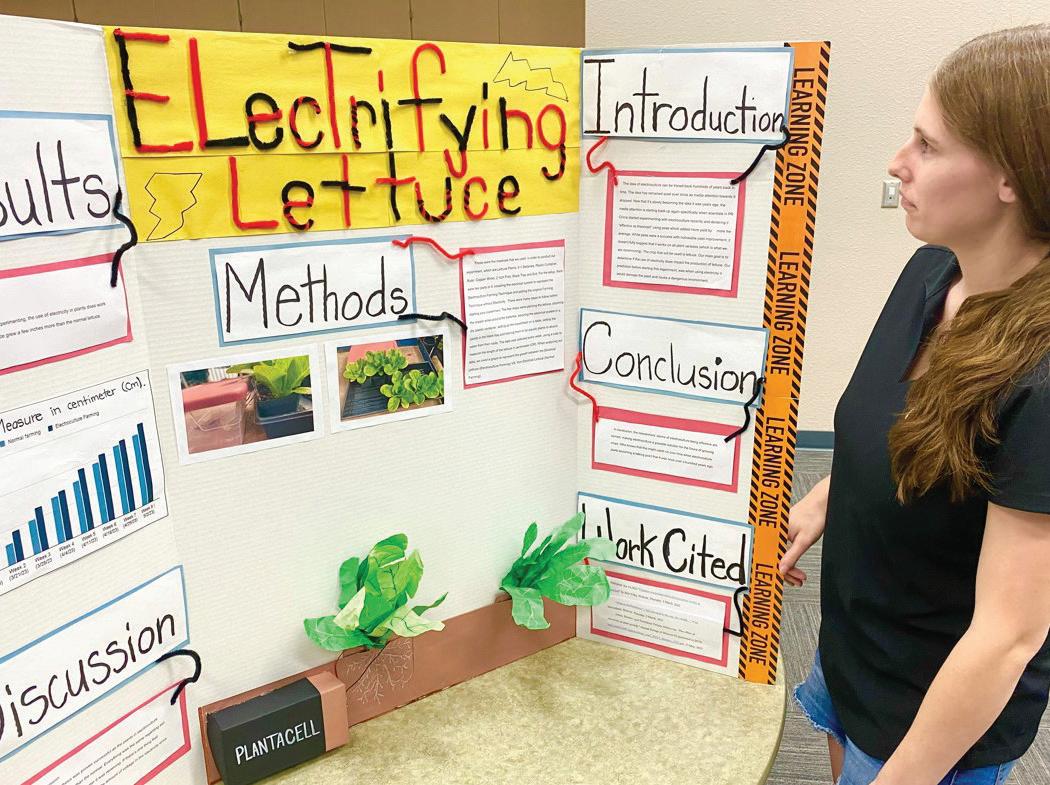
Held in Building 800 of the school, located at 2300 Gibson Road, this year’s symposium, basically allowed students to showcase their work on poster boards erected on tables across the room, much as might be seen in any school science fair.
But unlike many science fairs, the students showcasing their work might have spent months forming a thesis, setting up the experiments, analyzing the results and determining how those results compared to their predictions.
Prabha Ekanayake, who graduated from high school in Sira Lanka before coming to the United States –and who will be entering UC Davis this fall to continue her studies in agriculture – conducted what might at first appear to be a relatively simple experiment centered around cilantro growth.
What Ekanayake wanted to know was simply whether using regular top soil was better than using potting soil to grow cilantro? That’s an important question for backyard gardeners.
For Ekanayake, she found that potting soil delivered more robust cilantro because it retained
water but also allowed for better drainage. To prove her point, Ekanayake had a large bunch of the bright, green herb that people could sample.
Elsewhere, Marvyn Mendoza and Taralynn Mitchell looked at whether a farmer could grow more lettuce if plants were electrified.
Mendoza is a 2022 graduate of Dixon High School and Mitchell is a 2022 graduate of woodland High.
What the pair found was that after three months of exposure, lettuce did grow better when given steady “jolt” of electricity from a small, 9-volt battery.

This means, according to the team’s conclusion, that “electroculture” is an effective means, and possible solution, for the future of growing more crops.
And while “electroculture” may not practical for traditional dirt-based farming, it could prove effective in “vertical” farming systems where crops are grown year-rown inside
large warehouses, under controlled conditions using light and nutrient-rich water.
Meanwhile, other studies included one done by Priscila Naranjo on whether radio frequencies affect plant growth, the various methods of “at-home flower preservation,” by Fatima Angula Bermudez and Jeorgia Jacobsen; the effects of music on motivation, by Perla Gomez, Diana Hernandez and Leslie Pelayo; parental influence and cannabis use among teenagers, by Britany Blaine, Erika Gonzalez, Juan , Medina Hernandez and Crystal Mendez; the effects of social media on sleep, by T.J. Caldwell, Alfonso Guzman-Villalobos, Jessica Lopez and Ricardo Mignon; and the effect of music on performance by Leah Acosta, Devon Alexander, Amy Godinez and Alejandro Jacobo.
Under the social science element of the symposium, students like Marisela
Solorio-Lopez looked at whether parental involvement affects the college outcome of students; “Latinas’ experience of feeling heard by healthcare providers,” created by Adriana Alvarez; “This Gen or That: A pilot survey of the Punjabi perspective on American social justice movements,” done by Maneek Sidhu; and “Women in agriculture balancing family life,” created by Manuela Sierra.
Also featured at the symposium was a “prosthetic arm challenge” by Missa Miller, who helped create the device which has received local and national attention.

Students supported the variety of research projects, noting in a prepared video presentation, that they learned leadership skills, how to conduct methodical studies, along with being open to changing their ideas and opinions based on the outcomes of their work.
Courtesy photo
Catch mountain-dwellers like this calliope hummingbird during Audubon’s upcoming two-day field trip.

On the weekend of June 3 and 4, Kevin Guse will lead a Yolo Audubon trip to the Sierra Valley and the Yuba Pass. If you enjoy mountain birding, then this field trip is for you.
The group will explore birdlife in the Sierras on a two-day overnight trip.
Mountain specialties, such as Williamson’s sapsucker, black-backed woodpecker, whiteheaded woodpecker, redbreasted sapsucker, Townsend’s solitaire, brown creeper, goldencrowned kinglet, mountain bluebird, and calliope hummingbird, are target species for this trip.
The group will also enjoy the wonders of the Sierra Valley marsh, with a cacophony of sound led by the yellow-headed blackbirds. It’s also possible to see and hear
displaying willets, Wilson’s snipes, and American bitterns. This trip is limited to 10 participants, so please contact field trip chair John Hansen to sign up at jjhindavis@yahoo. com.
For more information on how to participate, go to Yolo Audubon’s websites, yoloaudubon.org or facebook.com/yoloaudubonsociety.
Yolo Audubon, a chapter of the National Audubon Society, is a nonprofit organization whose mission is to foster an appreciation of birds and conservation in Yolo County.
The group offers live and virtual events in an effort to educate and inform the public about birds and birdwatching. More information on birds in Yolo County is available at the websites above.
Blue Devil Ben Feryer clears the bar in the pole vault at the CIF Sac-Joaquin Section Track and Field Masters Championship at Ron and Mary Brown Stadium on Friday. Feryer, a junior, took second place with a leap of 14 feet, 9 inches. To view more photos, visit www.davisenterprise.com, click on the Sports tab and look for the story.
Sol Bitners unleases the shot put at the CIF Sac-Joaquin Section Track and Field Masters Championship at Ron and Mary Brown Stadium on Saturday. Bitners, also a junior, took third place in the event for DHS and second place in the discus. To view more photos, visit www.davisenterprise.com, click on the Sports tab and look for the story.
Norah Dulaney was striving to perform better at the CIF Sac-Joaquin Section Masters Track and Field Championship.
The long-distance runner on the Davis High girls track and field team itched that into her mind in competing in the finals of the 1600-meter race on the all-weather track at Ron and Mary Brown Stadium, the site of the Masters since 2019. The Masters was held at the stadium in 2022 after it was not held in 2020 and 2021 because of the pandemic. Putting together a game strategy during the race, the results paid off for Dulaney, taking second place in the 1-mile race with a time of 5 minutes, 01.34 seconds.
“I just feel like I deserved it to myself,” Dulaney said. “I’ve put in so much work over the last two years. I was meant to be
here ... I couldn’t even see myself here three years ago.”
Dulaney started off the race in the lead, and stayed within distance of Whitney of Rocklin’s Katie Kopec, who won the race at 4:56.80.
“There were just so many girls in this race,” said Dulaney, who was one of 22 girls in the race. “I knew that I would have to run the outside lanes if I wasn’t behind.”
Dulaney was one of nearly a dozen Blue Devils who placed in the top three in their field and running events on Saturday. This includes a DHS relay team and two juniors in Benjamin Feryer and Sol Bitners in field events.
The top three individuals in each field and running events advances to the California Interscholastic Federation State Track and Field Championships, which will be held at the Veterans Memorial Stadium on the Buchanan


High campus in Clovis on this Friday and Saturday.
Taking second place was sweet for Dulaney, who didn’t qualify for the race at the section’s Division I meet in 2022.
“I had a 5:12 last year,” laughed Dulaney. Dulaney also competed in the 3200meter race. She was in the middle of the pack for most of the 2-mile race and finished in 14th place at 11:19.03.
Last week was a good one for Dulaney off the track. She was one of 25 DHS senior-athletes who took part in Signing Day at the school’s quad on May 16. Dulaney is going to UC San Diego on a scholarship.
“It’s all crazy,” Dulaney said. “It’s awesome and exciting.”
Bitner took third place in the discus at 37 feet, 4.50 inches on Saturday.
“Sol didn’t have her best discus day ever,” Elliott said. “Sol has developed into
such a talented thrower, she can have an off day and still advance to state.”
Bitners had a better outing in the shot put on Friday, taking second place at 12908. “The shotput qualification was particularly exciting, as this is not her favorite event,” Elliott said.

There were some Blue Devils who took fourth place, just missing the third spot in advancing to state. The section is not sending alternates as it had prepandemic.
Feryer, who took second place in the boys pole vault at 14 feet, 9 inches on Friday, competed in the triple jump with a fourth-place finish at 45 feet, 4.25 inches. Lucas Tam took fourth in the boys 800meter race at 1:57.05.

Alex Valcarenghi leaped 6 feet, 3 inches in the boys high jump for fourth.
See DHS, Page B5
President Joe Biden is right. The massive tax cuts under the Trump administration turned out to be nothing more than a giant giveaway to the world’s largest corporations.
Mega corporations like FedEx, Nike, General Motors, Ford, Chevron and dozens of others have paid nothing or almost nothing in federal taxes, while raking in billions of dollars.
At the same time, the Trump tax handouts have worsened our national debt and harmed our economy. In all, the cuts cost our nation roughly $2.3 trillion and deepened the federal deficit by $2 trillion.
Biden has proposed to partially reverse the Trump tax cuts, which slashed the federal corporate tax rate in 2017 by 40%, from 35% to 21%. Under Biden’s plan, the corporate rate would increase modestly to 28%.
The president’s plan is smart, prudent and responsible, and would help balance our federal budget. That plan, however, is being stalled by the Republicans who control Congress, so the Trump tax cuts appear here to stay.
But that doesn’t mean the fight for fairness is over. California has the opportunity to follow the president’s lead and recover some of Trump’s tax giveaway. The California Senate’s Protect Our Progress budget plan would do exactly that, while also helping small businesses — the backbone of our economy who’ve been buffeted by inflation –and maintaining funding for our schools, homelessness programs, climate protection, child care and more.
A generation ago, big corporations paid a higher tax rate in California and shouldered a fairer share of our state’s tax burden than they do now. In the early 1980s, corporations that reported profits in our state paid 9.6% of their income in state taxes. But during the Republican-led gubernatorial eras of George Deukmejian and Pete Wilson, the state corporate tax rate was lowered twice to 8.84% — where it still stands today — for all businesses, big and small.
Under the Senate budget plan, California would recoup some of the Trump tax giveaways by increasing the tax rate on the very largest corporations. The new rate of 10.99% would apply to just about 2,500 corporations, located all over the U.S., that report taxable income of more than $1.5 million from the business they do in California. The tax rate would impact the nation’s biggest companies, regardless of where they’re headquartered, from WalMart and Amazon to Coca-Cola and Chevron.
Smaller companies that do business in California — the other 99.8% or roughly 1 million businesses — would get a 25% tax cut. Most of those are small businesses that have seen rising costs and could use some help right now. In addition, our Senate plan would provide $1.9 billion in tax relief for renters and lowincome families, who also deserve much needed relief from inflation.
In all, our proposed higher tax rate on mega corporations would generate about $6 billion a year in revenue for California. And it would help us avoid budget cuts that we would otherwise face this year, from housing to transportation, broadband, and climate and green energy investments.
This is why we’ve dubbed our budget plan, “Protect Our Progress.” It protects the transformative progress California has made in the past several years to create a more equitable economy for all. And it does so by requiring big corporations to pay their fair share and by heeding President Biden’s call to recoup some of the huge corporate handouts of the Trump era.
— Democratic state Sen. Nancy Skinner of Oakland is the chair of the Senate Budget Committee. She wrote this for CalMatters, a public interest journalism venture committed to explaining how California's Capitol works and why it matters.
In California’s 172 years as an American state, relations between its government and the more than 400 cities within state boundaries have never been as contested and hostile and litigated as now.
Dozens of cities in most parts of the state are out of compliance today with a 1960s-era law signed by thenGov. Ronald Reagan requiring them to file housing plans every eight years with the state’s Department of Housing and Community Development (HCD), which can reject any blueprint it does not like.

Meanwhile, the state is trying to use the longstanding law to force construction of dense new housing everywhere, no matter how it might change the nature of any community.
In places that have either filed no plans or had them disapproved and missed deadlines for revisions, developers can use a previously obscure and unused provision of the old law known as the “builders’ remedy” to build even where cities have previously stopped them, so long as they include enough low-income or affordable units.
What’s affordable or lowincome varies by location.
All this appears to some to conflict with the concept of a
charter city — and more than one-fourth of California’s cities have charters. State law gives charter cities “the power to make and enforce all laws and regulations in respect to municipal affairs, subject only to such restrictions and limitations as may be provided in…the (state) Constitution…”
But both Gov. Gavin Newsom and his hand-picked state attorney general Rob Bonta say statewide law overrides city charters, letting legislators mandate whatever they wish wherever they wish.
Today’s focal points in this classic conflict are two very dissimilar cities, one in coastal Orange County and the other on the San Francisco Peninsula — Huntington Beach (sometimes known as “Surf City”) and Atherton, usually listed as the wealthiest city in America.
Atherton features stately residences, most on lots of one acre or more, and has been home to the likes of athletes from Y.A. Tittle to Stephen
I was pleased to see several DHS students co-author a letter to the editor concerning housing prices. Having our youth actively participate in city planning and policies is to be welcomed and encouraged.
As a retired UCD professor specializing in philosophy of science, I urge them to take the next step in thinking about how to ferret out causes in complex situations.
The students hypothesize that Measure J/R/D is the cause of our high housing prices — and of course, they are not the first to do so.
The students say that only two projects have passed, but the one that failed most recently (DISC) was not a housing project and would have increased, not decreased, housing demand. In other words, the students need to show the effectiveness of the cause. They also need to show that Davis’ prices have increased at a rate higher than other areas of California. In other words, they need to show there is a phenomenon in special need of explanation.
They also need to consider disparate housing prices in California. Adding more
Speak out
President
Curry, financiers like venture capitalist Tim Draper (an early investor in outfits from Skype to Hotmail and Tesla) and politicians like former gubernatorial candidates Meg Whitman, a Republican, and Steve Westly, a Democrat.
With just over 7,000 residents, Atherton has been told by the state to allow almost 350 new housing units by the end of this decade. Curry objected to one proposed new development, and city officials at one point suggested the city could meet its quotas if every property owner added an additional dwelling unit (sometimes known as ADUs or granny flats).
Local residents at one town council meeting told elected officials they want their officials to be more aggressive in fighting off the state. “If you’re not comfortable fighting for us, then you should step down,” said one.
Huntington Beach residents and officials take a similar attitude, despite being Bonta’s first and best-publicized target, with millions of dollars in state grants at risk in their defiance.
“We have no problem doing our fair share, but with fair numbers,” Mayor Pro Tem Gracey Van Der Mark said
housing in Davis won’t lower prices if it is attractive for people with high Bay Area salaries to move here, as they did with the Cannery. To Bay Area eyes, our housing looks like a bargain.
I hope they take the next steps. Only then would we know if the hypothesis should be accepted or revised. I also hope they join me and others in urging the City Council to adopt a strong Affordable Housing Ordinance, which will be on Council’s agenda soon. Among other issues, untrackable accessory dwelling units should not count as affordable housing and in-lieu fees should not be a financially attractive option for developers — they need to be raised.
Roberta Millstein DavisOn April 18, 2023 the Yolo County Board of Supervisors voted and approved a motion to help fund Yolo County Fire Districts pledging $1.5 million towards fire service sustainability. This was the culmination of five years of meetings of the Fire Sustainability Committee, made up of county staff, fire chiefs, and supervisors Barajas and Sandy.
The Hon. Joe Biden, The White House, Washington, D.C., 20500; 202-456-1111 (comments), 202-456-1414 (switchboard); email: http://www.whitehouse.gov/contact
U.S. Senate
Sen. Dianne Feinstein, 331 Hart Senate Office Building, Washington, D.C., 20510; 202-224-3841; email: https://www. feinstein.senate.gov/public/index.cfm/ e-mail-me
Sen. Alex Padilla, 112 Hart Senate Office
Building, Washington, D.C., 20510; 202224-3553; email: https://www.padilla. senate.gov/contact/contact-form/
House of Representatives
Rep. Mike Thompson, 268 Cannon Office Building, Washington, D.C., 20515; 202225-3311. District office: 622 Main Street, Suite 106, Woodland, CA 95695; 530-753-5301; email: https:// https:// mikethompsonforms.house.gov/contact/
Governor Gov. Gavin Newsom, State Capitol, Suite 1173, Sacramento, CA 95814; 916-4452841; email: https://govapps.gov.ca.gov/ gov40mail/
during a public meeting. “I do not believe the benefits of building outweigh the consequences of destroying our city.”
It’s not actual destruction of any city that’s in prospect, merely destruction of the ambiance in some places.
Numbers are key here. The state uses quotas generated by HCD, whose estimates of the state’s housing need have never accounted for homes vacated by the hundreds of thousands of Californians who moved elsewhere in the last six years, costing this state one seat in Congress. Housing need estimates have varied widely since 2017, from 3.5 million in 2018 to 1.8 million more recently.
Both Bonta and Newsom ignore the varying estimates and the city charter issue. Which leaves the entire matter far from decided, no matter what state officials may claim at any given moment.
Email Thomas Elias at tdelias@aol.com. His book, “The Burzynski Breakthrough: The Most Promising Cancer Treatment and the Government’s Campaign to Squelch It,” is now available in a soft cover fourth edition. For more Elias columns, visit www.californiafocus.net.
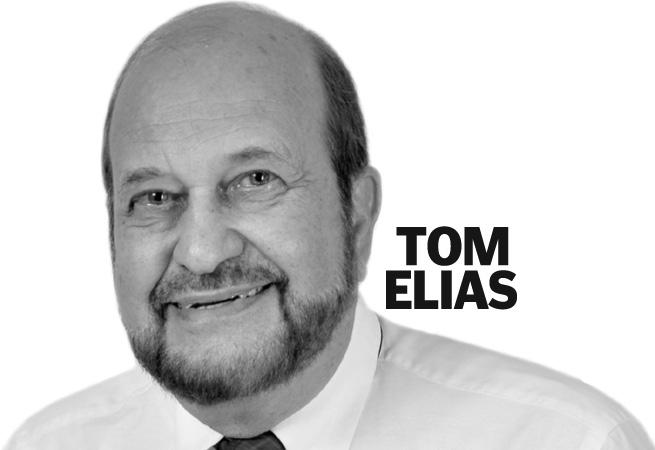
The $1.5 million represents the matching of funds by Yolo County for those fire districts that earnestly participate in a benefit assessment process. The matching of funds allows the fire districts essentially to cut the benefit assessment ask in half, hopefully allowing it to successfully pass.
Our rural fire districts protect growing and disadvantaged communities, remote small towns, and rural homesteads large and small. I would like to thank the supervisors for approving this important initiative. It will allow fire districts to better support our volunteer firefighters, it will help put personnel in stations, improve our equipment and infrastructure needs, and provide funds for adequate training.
The rural way of life has many positive attributes with many trade-offs, some of those are lack of certain services. The one trade-off that cannot be accepted or allowed is the lack of or weakened emergency services. We deserve and need the same protections that our friends in the incorporated areas receive. I would like to thank Supervisor Barajas for championing this process and keeping his promise to make it happen.
Wyatt Cline Retired battalion chief, Woodland Fire DepartmentRestaurants evolve to meet changing tastes
In the highly competitive restaurant industry, it’s crucial to continually evolve and transform in order to stay relevant and attract customers. Restaurant transformation involves re-evaluating the image, menu, ambiance and overall experience. It’s a process that can be challenging, but when done successfully, it can lead to increased customer loyalty, improved sales and longterm growth.
Take for example Fogo de Chão, which has practiced the authentic, centuries-old Brazilian grilling practice of churrasco, or cooking over an open flame, since 1979 at more than 70 locations around the world. Each meal is about discovery with a menu that’s fresh, unique, innovative and centered around premium cuts of grilled proteins, expertly butchered and simply seasoned using the culinary art of churrasco.
The full churrasco experience includes continual service of fire-roasted meats carved tableside, including house specialties like picanha (signature sirloin), filet mignon, ribeye, fraldinha (bottom sirloin), cordeiro (lamb) and more.
Consumers are always looking for new and exciting dining experiences, and a menu refresh can provide it. This can involve adding new dishes, changing the way existing dishes are prepared or presented and incorporating current

I did not see it in person of course; my parents bought a television set specifically to watch the coronation as broadcast in real time by the BBC. The TV was a manufactured by a British company, Bush, that in those days was considered the brand leader.
The company still makes TV sets that are considered reliable, good value for money, easy to set up, and environmentally friendly.
Not many people in those days had a TV and the coronation was a driver for TV sales as there was no other way to see this stellar event in anything like its full length. As
food trends. For example, many restaurants are offering more vegetarian and vegan options to cater to the growing number of consumers adopting plant-based diets.
Leaning into this trend, Fogo de Chão is expanding its menu and Market Table offerings with new plantbased and nutrient-dense dishes, alongside an expanded Bar Fogo beverage program complete with traditional and clean, zero-proof cocktails. The plant-based offerings include menu innovations like Seared Tofu with Miso Black Bean Pasta and a hearty Roasted Power Vegetable Bowl that complements a myriad of dietary lifestyles.
Taking it a step further, guests can enjoy indulgent, premium cuts within the churrasco experience at no additional cost. This added value introduces guests to new flavors in a low-risk setting by including a variety of options like bone-in ribeye, double-cut pork chop and lamb picanha.
Another important aspect of transformation is redesigning the restaurant’s physical space. A restaurant’s ambiance can greatly impact customers’ dining experiences, and a refreshed decor can help to create a more modern, welcoming and comfortable environment. With new locations opening in markets coast-to-coast, the experiential dining experts are revamping interiors to
create unique and architecturally led dining spaces that create a memorable hospitality experience.
The additions of lounge and conversational seating for more comfortable dining, large patio spaces for al fresco dining and open kitchens help immerse guests in the experience, which appeals to the modern diner.
In addition to these changes, restaurants may also need to re-evaluate and adjust marketing strategies as their customer bases change. This may involve shifting branding to appeal to a
younger demographic, for example, or focusing on a specific type of cuisine or dining experience.
Designed to enhance the guest experience and move beyond just a sit-down dinner, the churrasco experience at Fogo de Chão appeals to a younger, highly diverse audience with 87% of guests being Millennial, Gen X and Gen Z customers, 41% of whom are female. Options like Bar Fogo, which features All-Day Happy Hour; shareable Brazilian-inspired bar bites such as Lobster and Shrimp Tacos and Queijo
Assado, a grilled Brazilian cheese served with malagueta honey; South American-inspired cocktails, beers and wine; or The Butchery, where premium cuts of meats, carved in the traditional Brazilian style, can be taken to go for cooking at home, allow for new ways to experience the traditional cuisine.

de Chão. “Today, we’ve evolved from a small restaurant in the countryside of southern Brazil to a global category leader celebrating the culinary art of churrasco. Restaurant transformation is necessary to stay competitive in today’s fast-paced and evolving industry. All of our transformation efforts continue to be rooted in innovation to enhance the guest experience while remaining true to our Brazilian heritage.” — Family Features. Learn more and find a local restaurant near you at fogo.com.
am likely one of the few people in Davis who saw, all the way through, Queen Elizabeth’s coronation on June 2, 1953. I remember well the hushed voice of Rich ard Dimbleby, ace commentator, who knew everything and everybody in a live broadcast.a result, our living room was overflowing with neighbors when the event started. We had the biggest TV set then available at retail: it was a 12-inch black and white and a little fuzzy at the edges.
I rued the day when that darn thing came into the house as it changed our way of life in a nasty way as far as I was concerned: my parents no longer played with me in the evenings, no chess with Dad, no Ludo or Snakes and Ladders and no simple card games, like snap! I was mortified. Instead, Mam and Dad watched the massive 12-inch B&W
Bush where, it seemed to me, the dominant programming was “Please Stand By!” test pattern and interlude. I never got over that.
Every street and neighborhood also had a coronation street party at which the cooks did everything to give the youngsters a good start on diabetes. There were miles of cakes, cookies, jelly and canned fruit from Sacramento (wherever that was) and enough flags and bunting to launch a thousand ships. There was a whole barrel of beer for the party that, for some reason, was in my dad’s charge; that was odd as he was practically a teetotaler. He knew about beer barrels from his brothers, still in Wales, who were distinctly not teetotal.
In 1953 I was not quite 17, so I remember the
Enterprise staff Gary Ge, a UC Davis student with the Research Scholars Program in Insect Biology, is the 2023 recipient of the Dr. Stephen Garczynski Undergraduate Research Scholarship, sponsored by the Pacific Branch, Entomological Society of America. Ge, who studies with Professor Louie Yang of the department of entomology and nematology and UC Davis Distinguished Professor Art Shapiro of the department of evolution and ecology, researches the American apollo butterfly (Parnassius clodius) as a model to study how microclimatic conditions affect cold-adapted insects.
Ge was honored at the annual PBESA meeting, held recently in Seattle. He received a $1,000 award for travel expenses and a waived registration fee.
Last year UCD student Gwen Erdosh, also of
Name Droppers
RSPIP and a research scholar with the Yang lab, won the inaugural Garczynski scholarship. Ge serves as a research assistant with Shapiro's Central California Butterfly Population and Diversity Trends Study. He works with Yang as a project manager and a research assistant on his Milkweed Phenology Study.
The following people were initiated into The Honor Society of Phi Kappa Phi, the nation's oldest and most selective collegiate honor society for all academic disciplines:
At UCD: Abigail
Oswald, Amber Nusser, Amine Sebai, Arnav Rastogi, Arthur Jiang; Cass Wagar; Chujun Tang; Darren Taira; Emma Clough; Emma Griffis; Evan Gehres; Haocheng
Li; Ismael Ali; Jackie The; Janice Lee, Marika Brown, Mark Wood, Matthew Lee; My-Lien Tran; Peijie Dai; Piper Christensen; Russell Umboh; Sarah Gibides; Shengmin Liu; Sophia Sandhu; Subhiksha Kanchadapu; Wanting Zeng; Wei-Lun Hsiao; Yujun Ji; Zakary Logie; and Zev Barasch
At Sacramento State University: Anais Romero and at San Jose State University, Nicole Nunez.
They are among approximately 25,000 students, faculty, professional staff and alumni to be initiated into Phi Kappa Phi each year. Membership is by invitation only and requires nomination and approval by a chapter.
— Do you know of someone who has won an award or accomplished something noteworthy? Email it to newsroom@davisenterprise.net.
events of that day, especially the coronation ceremony, quite well. I was fascinated by it. I gasped at the history: William the Conqueror in 1066 was crowned at Westminster, and the first in the present church was Edward I, in 1274. Either way, more than 1,000 years of history.
I was glued to the 12-inch screen for the duration of the processions and ceremony. I loved the music, the pomp, the trumpets, the extravagant regal dress of the lords and ladies, the priests in their splendor and the inspiring words from the Archbishop of Canterbury. I was thoroughly hooked.
B
sense that all was well and getting better. This was the second Elizabethan era and we looked to our philosophers and artists and playwrights and politicians to do great and mighty things. As in the reign of Elizabeth I there would be a new Shakespeare, a new Raleigh, a new Drake, a new Cecil. Buds of optimism burst into flower at Elizabeth II’s coronation.
The same is not true today. Britain is different after the ravages of Thatcher and foolishness of Brexit and a long run of Conservative governments. I am not the same person today. The Royal Family is not the same today as it was; somehow tawdry and disheveled, ordinary, lacking grace and perhaps unworthy of the position they hold or the example they should set.
ut the times were different then. Britain was flailing upwards after the ravages of World War II and rationing was almost ended and life returning to normal with an upwardThe ceremony seemed different with a Harry Potter sense, with trinkets:
the spurs, the bracelet, the belt and sword and the gauntlet. Only the orb and sceptre count. The music was unfamiliar and too much, and the Archbishop needs to update the script: it does no good to berate the King about laws he has no control over. Divine right of monarchs died a while ago. The whole thing seemed messy and in retreat. I know many will have a different opinion and I understand and respect that.
I appreciate why many Commonwealth countries that retain the monarch as titular head of state are uneasy. We cannot really expect a gem of 1,000 years of history to shine now as it once did 70 years ago.
Shakespeare says uneasy lies the head that wears a crown and Charles III looked uneasy. —Reach Michael Lewis at waleslewis792@gmail. com.

 Stephan Pastis
Stephan Pastis



 Charles M. Schulz
Charles M. Schulz

correspondent
In its final home game of the season, the UC Davis baseball team displayed too much generosity to find a victory.
Aggie pitchers hit six batters and issued seven walks to UC Irvine batters. That led to UCI posting a 9-2 win at Dobbins Stadium on Sunday.
The Anteaters completed a three-game sweep of UC Davis (7-20 in the Big West Conference, 17-34 overall), which also committed two errors.
Despite three hits from senior catcher James Williams, UCD lost for the 13th time in 16 games.
“We’ve hit a bit of a wall right now,” UC Davis head coach Tommy Nicholson said. “It’s obviously not the product we want to put on the field, but certainly something to learn from. If these guys want to be the ones who turn the program around, it’s a good learning experience.”
UC Irvine (16-11 in the Big West, 35-17) kept alive its hopes for an NCAA tournament berth.
UC Davis held a pregame ceremony for three departing seniors, all three of whom saw extended action in defeat.
Williams cut the Aggies deficit to 4-1 with an RBI single in the fourth. His three-hit effort complimented his display
of endurance behind the plate. UC Davis used seven pitchers in a game that lasted two hours and 55 minutes.
Senior starting pitcher Nate Freeman allowed three runs (two earned) in three innings. He struck out two and walked one. The one extra base hit he allowed — a lead-off triple from Jo Oyama — came around to score.
Reliever Nathan Peng took the mound in the sixth. He worked 1 2/3 innings, allowing a run and striking out a pair.
The Aggies trimmed Irvine’s lead to 4-2 in the bottom of the fifth. With Joey Wright at first, Damian Stone ripped a line drive to left center. The double was the Aggies’ first extra base hit of the series. When left fielder Myles Smith misplayed the ball, Wright came around to score.
But UCI responded in a tedious top half of the sixth. With Aggie pitchers hitting three batters and allowing an infield single, the Anteaters scored twice to take back control of the game.
The Aggies conclude their season at Long Beach State (30-22, 14-13). The three-game series begins Thursday at 6 p.m.
— Follow Mark DeVaughn on Twitter: @OrangeMarkD.
Andre Zhang had a good outing at the California Interscholastic Federation NorCal Regional Boys Golf Championship on Monday.
The Davis High golfer, a junior, hit a lot of greens at the Berkeley Country Club in El Cerrito. But a double bogey on the final hole led to a 76 score, missing the cut to compete at the CIF State Championship.
“Andre played very well today,” said Davis head coach Kelly Hammond. “However, his putter did not cooperate, and he missed at least
four short putts, which hurt his score.”
Five members of the UC Davis track and field men and women’s teams will compete at the NCAA Track and Field Preliminary Championships at Sacramento State’s Hornet Stadium starting today through Saturday.
Moving on to the regional round are Sierra Atkins, Elizabeth Churchill, Corey Moore, Kerrington
and Brianna Weidler.
Atkins will compete in the women’s 10,000 meters Thursday at 9:10 p.m.
Moore is in the men’s discus that will go Friday at 1 p.m.
Churchhill is in the women’s high jump, which is Saturday at 2:30 p.m.
Smith is in the women’s triple jump, which is Saturday at 6 p.m.
Weidler is in the women’s 5000meter race Saturday at 8:10 p.m.
Daily admission is $15 or $40 for all four days. Same price applies toward children 17 and under, college students and senior citizens.
UC Davis baserunner James Williams, seen here taking a lead off third base in a Big West Conference game at CSU Bakersfield on April 1, had a strong performance for his team in Sunday’s home finale against UC Irvine. The Aggies, who are now 7-20 in the Big West, close out the season in a three-game road series at Long Beach State, which is still battling for a playoff berth. UCD and Long Beach will play Thursday, Friday and Saturday, all games starting at 6 p.m.

Mike Bush/ enterprise file photo
From Page B1
The Blue Devils advanced about half of their combined boys and girls in field and running events.
The boys 4x800 relay team of Lucas Tam, Beckett Dolan, Brian Fackert, Jefferson Wright, Liam Lopez, Jay Doctor, Samuel Rosas and Ryan Mitchell won the firstever taking place in the section’s history with a time of 8 minutes, 01.75 seconds.
“The 4x800 was a three-team battle between Davis, Whitney and Jesuit,” Elliott noted. “We are very proud of our team.”
Delta League rival Jesuit took second place at 8:02.05.
Feryer, a junior, took second place in the boys’ pole vault with a leap of 14 feet, 9 inches.
— Contact Mike Bush at mike@davisenterprise.net. Follow on Twitter: @MBDavisSports.

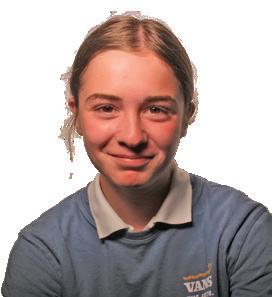

Some of the most searingly popular movies of the last two decades were the product of entertainment powerhouse Disney and its multitude of subsidiary companies.
Pixar, Marvel and Lucasfilm are all some of the most widely recognizable film studios working today, and their projects have captivated audiences worldwide. But recent years have seen an unmistakable shift in the quality and philosophy of these studios.
In his book “Creativity Inc”, Pixar co-founder Edwin Catmull famously wrote that sequels oftentimes signaled “a sort of creative bankruptcy.” Catmull wasn’t entirely against the idea of sequels; he aimed to keep the ratio of sequels to original properties to about 1-2, citing the financial security that safer projects gave the company. But it’s fair to say that the man who wrote those words would have balked at the current state of his company, roughly half of whose projects in the last five years have been sequels.
Films like “Incredibles II”, “Toy Story 4” and “Lightyear” are not bad movies, but they fail to justify their existence, even without considering that other, more original projects were likely pushed out of the way so these tired properties could have more time in the limelight.
The motives behind releasing these movies are plain to see; “Finding Dory”, “Toy Story 4” and “Incredibles II” all made over a billion dollars worldwide at the box office, while Pixar’s other original projects struggled to make a fraction of that. Simply put, sequels are easy money.
Lucasfilm, the production studio behind “Star Wars”, was acquired by Disney in 2012, and since then it’s produced a total of 14 properties, the majority of which were met with lukewarm to negative critical reception.
The most high-profile and oft-examined case of this decline in quality is the entertainment juggernaut, Marvel Studios. Following a 23 movie-run that ended in 2019 with the conclusion of Marvel’s “Phase 3,” Marvel has seen a steep decline in quality, with films like “Black Widow”, “Eternals” and “Shang-Chi” all grossing around $400 million, box office numbers unseen by Marvel since the early days of the franchise.



It’s 11 pm, and my assignment is due at midnight. I can feel my eyelids beginning to close, but if I don’t complete this assignment on time, my grade will suffer.
The late penalty is 20% off—even if the work is submitted just a minute past the deadline.

With this penalty looming over my shoulder, my performance suffers. I rush through the assignment, caring more about the deadline than the quality of the work. Any learning has been thrown out the window.
Anxiety like this is not present when doing homework in my math class. This is because while there is a deadline, it’s more of a suggestion than a strict cutoff. There is no diminishing penalty for late work.
As a result, I feel more comfortable going at my own, slower pace when doing assignments. With the lack of stress, I am able to understand the material better.
Teachers should eliminate late penalties. If someone takes a longer time to learn something, and because of this misses the deadline, it’s like they are being punished for trying to learn.

A study led by Parisa Rouhani, a Harvard researcher, followed students in a ninth-grade course and found that there was no meaningful relationship between time and performance. Some students who did well in the course took a long time, while others did not.
Clearly, the time it takes to learn certain topics varies from person to person, and it’s not fair to establish a penalty if a little more time is needed.
It’s not like deadlines are a bad thing—they help keep students on track to succeed. However, by implementing penalties, such as a 20% point deduction, rushing is promoted.
Rushing work does not produce good results. It does not allow for the in depth learning of a subject.
Rouhani’s study also found that when students are allowed to master material, they perform better in a course.
I definitely experience this in my math class. It takes me longer to do my math homework than some other people in my class. It’s not like I’m bad at math, it’s just that I take my time when trying to understand it.
In the end, rushing is what gets students off track, and that is promoted by late penalties. To improve students’ performance in class, the removal of these penalties all together may be necessary.
The original three phases of Marvel were, for the most part, building towards a goal for its entire duration. The connective tissue between the films was what allowed such a colossal universe to seem cohesive and to work as one story.
But now Phase 4 is over, and aside from a vague suggestion of a storyline, we still have no real idea what the Marvel Cinematic Universe is even about anymore. Most of the stories we saw were half-baked spin-offs lazily put together to fill out the Marvel roster, or a convoluted mess of different ideas that didn’t mesh with each other.
The problem with the latest additions to the Disney catalog, whether it be from Marvel, Pixar, or Lucasfilm, is that these films lack passion. The studios behind the original projects that these new films build on were desperate, and so they put everything they had into every project, and as a result, they made films that are iconic and hold up to this day.
But now that they’ve “made it,” they’ve taken their foot off the gas. Instead of making films because they believe in them, they make films with the cynical confidence that they will turn a profit, no matter what they do or how lazy they get, because they know if they slap the name of a successful property on a film, enough people will come and see it that the studio can keep doing it.
And so far, they’re right.
“(Companies) make films with the cynical confidence that they will turn a profit, no matter what they do or how lazy they get”